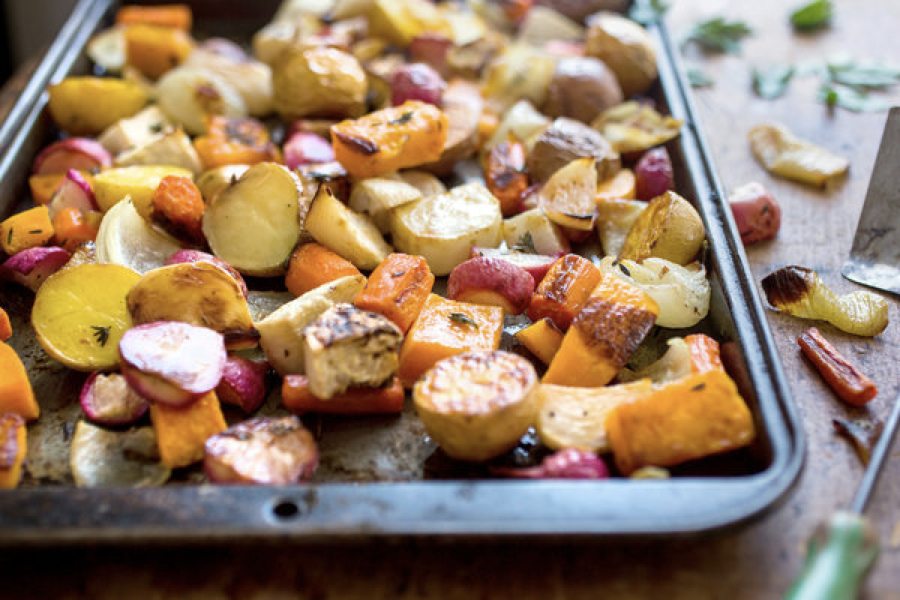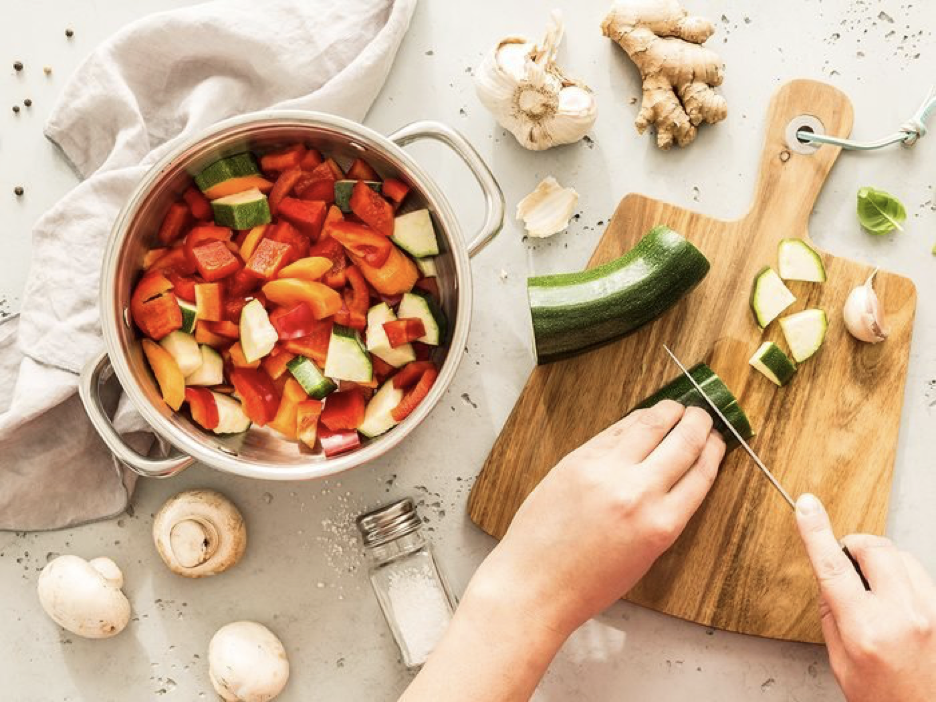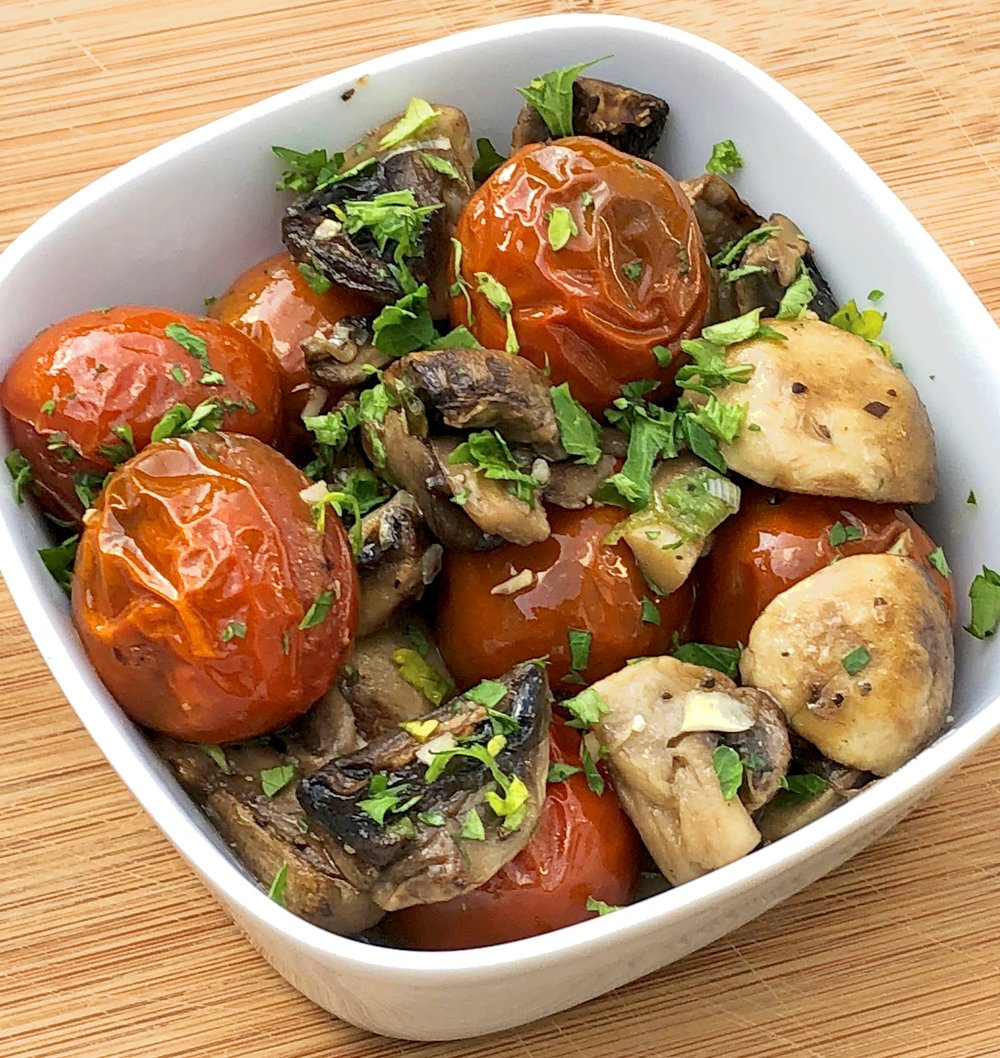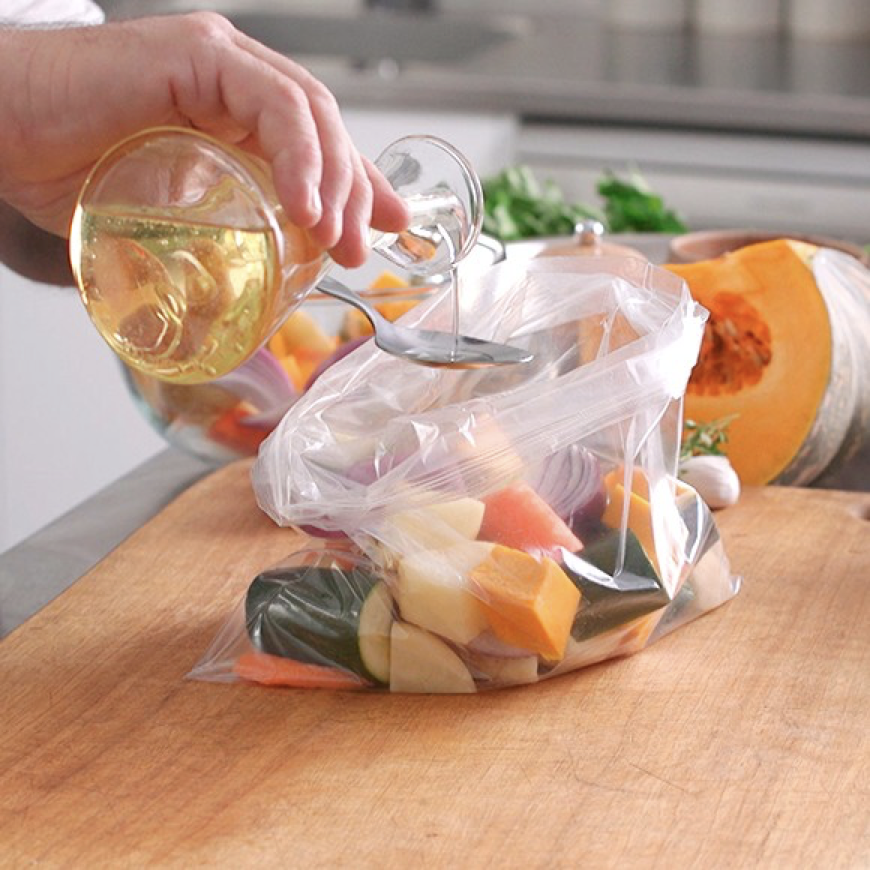Vegetable Roasting 101
One of my favorite ways to prepare veggies is to roast them at very high heat. This method makes them crispy and flavorful—simply delicious. But I have wondered if the high heat destroys their nutrients. If you’ve ever asked this question, you’ll appreciate this information.

All my research points to NO, the majority of nutrients aren’t destroyed. There’s no need to forgo roasted veggies because of high heat. The fact is that all forms of cooking do destroy some of the nutrients (such as vitamin C and B vitamins) in vegetables.
But the flip side is that some nutrients actually become more bioavailable when vegetables are cooked, since cooking helps release the nutrients from the cell walls of the plant. These include nutrients in the carotenoid family, such as lycopene (found in tomatoes and red peppers) and beta-carotene (in carrots, spinach and kale). Mushrooms, asparagus and cabbage supply more antioxidant compounds when cooked compared with raw.

There is one caveat, however: Charring causes the formation of acrylamides (potential cancer-causing chemicals), particularly in starchy foods such as potatoes. To avoid charring, roast starchy veggies to a golden brown.
With the health benefits of roasted veggies established, let’s look at tips for roasting success. Here’s a quick tutorial—Vegetable Roasting 101—as taught by several professional chefs:

FIRST OF ALL, KNOW WHAT VEGETABLES ARE BEST FOR ROASTING. Root vegetables (potatoes, parsnips, sweet potatoes, and carrots) are old standbys when it comes to roasting, of course. But the pros suggest you also take a look through the crisper drawer to find other roasting candidates — from crucifers like broccoli and Brussels sprouts to surprises like zucchini, onions, bell peppers, and cabbage. Even tomatoes can be roasted.

If you’re not sure if a particular vegetable can be roasted, it’s recommended you just give it a try. It might not end up being a favorite way to eat that vegetable, but it’s definitely worth the experiment to find out. (BTW: I’ve found through years of research for my articles that almost all professional chefs encourage experimenting with recipes. They even admit that’s exactly how most of their recipes originate—through experimentation.)
NEXT, DON’T SKIMP ON THE OIL. Once you’ve cut your vegetables down into bite-sized pieces, toss them with some good-tasting oil. Use enough to give the vegetables a slick, glossy coating, but not so much that you have puddles in the bottom of your bowl — a tablespoon or two will usually get the job done. Not only does the oil help the vegetables cook more evenly and crisp up in the oven, but it also adds a rich flavor that makes roasted vegetables irresistible.

A mild olive oil is considered perfect for vegetable roasting, but you could also use coconut oil, avocado oil, or any other favorite oil. Professional chefs like to toss the vegetables with their hands so the oil can be rubbed into the vegetables; this method ensures the veggies evenly coated.
Last but not least, also ADD SOME SALT TO YOUR TOSSING. And black pepper or any other seasonings (such as powdered ranch dressing mix) work well, also. Be generous, but not excessive — add enough salt and other seasonings so that each piece of vegetable gets a little.

All my research points to NO, the majority of nutrients aren’t destroyed. There’s no need to forgo roasted veggies because of high heat. The fact is that all forms of cooking do destroy some of the nutrients (such as vitamin C and B vitamins) in vegetables.
But the flip side is that some nutrients actually become more bioavailable when vegetables are cooked, since cooking helps release the nutrients from the cell walls of the plant. These include nutrients in the carotenoid family, such as lycopene (found in tomatoes and red peppers) and beta-carotene (in carrots, spinach and kale). Mushrooms, asparagus and cabbage supply more antioxidant compounds when cooked compared with raw.

There is one caveat, however: Charring causes the formation of acrylamides (potential cancer-causing chemicals), particularly in starchy foods such as potatoes. To avoid charring, roast starchy veggies to a golden brown.
With the health benefits of roasted veggies established, let’s look at tips for roasting success. Here’s a quick tutorial—Vegetable Roasting 101—as taught by several professional chefs:

FIRST OF ALL, KNOW WHAT VEGETABLES ARE BEST FOR ROASTING. Root vegetables (potatoes, parsnips, sweet potatoes, and carrots) are old standbys when it comes to roasting, of course. But the pros suggest you also take a look through the crisper drawer to find other roasting candidates — from crucifers like broccoli and Brussels sprouts to surprises like zucchini, onions, bell peppers, and cabbage. Even tomatoes can be roasted.

If you’re not sure if a particular vegetable can be roasted, it’s recommended you just give it a try. It might not end up being a favorite way to eat that vegetable, but it’s definitely worth the experiment to find out. (BTW: I’ve found through years of research for my articles that almost all professional chefs encourage experimenting with recipes. They even admit that’s exactly how most of their recipes originate—through experimentation.)
NEXT, DON’T SKIMP ON THE OIL. Once you’ve cut your vegetables down into bite-sized pieces, toss them with some good-tasting oil. Use enough to give the vegetables a slick, glossy coating, but not so much that you have puddles in the bottom of your bowl — a tablespoon or two will usually get the job done. Not only does the oil help the vegetables cook more evenly and crisp up in the oven, but it also adds a rich flavor that makes roasted vegetables irresistible.

A mild olive oil is considered perfect for vegetable roasting, but you could also use coconut oil, avocado oil, or any other favorite oil. Professional chefs like to toss the vegetables with their hands so the oil can be rubbed into the vegetables; this method ensures the veggies evenly coated.
Last but not least, also ADD SOME SALT TO YOUR TOSSING. And black pepper or any other seasonings (such as powdered ranch dressing mix) work well, also. Be generous, but not excessive — add enough salt and other seasonings so that each piece of vegetable gets a little.
Sources:
- www.cooking.nytimes.com
- www.besthealthmag.ca
- www.campdenali.com
- www.ronniefein.com
- www.healthier.qld.gov.au
 Alice Osborne
Alice Osborne
Weekly Newsletter Contributor since 2006
Email the author! alice@dvo.com
